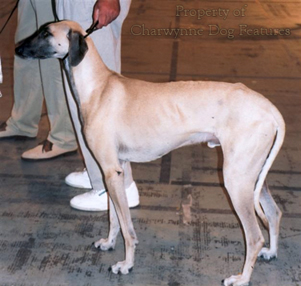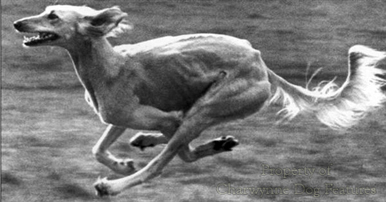711 DESERTING THE LURCHER
DESERTING THE LURCHER
by David Hancock
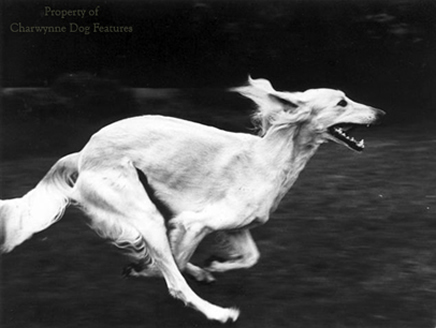
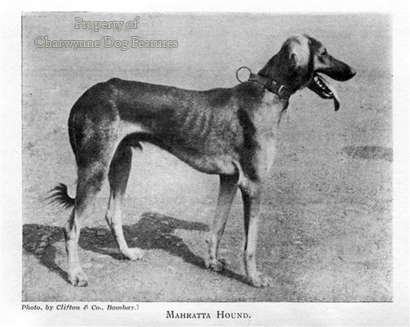
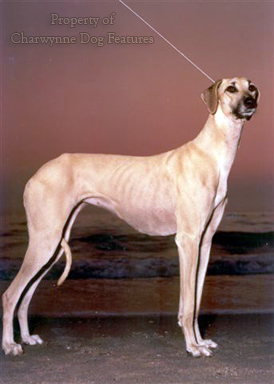 "It is of course possible that the Saluqi of times past was used in a much wider role than is customary today. In Central Asia for example it seems it is indeed a much more versatile hound using scent as well as sight to locate its prey. However in desert conditions there is not much scope for scenting game; whereas the open terrain is conducive to hunting by sight...It is a well-known phenomenon that faculties atrophy if they are not exercised. So it is just possible that in earlier times the Saluqi hunted both by scent and by sight."
"It is of course possible that the Saluqi of times past was used in a much wider role than is customary today. In Central Asia for example it seems it is indeed a much more versatile hound using scent as well as sight to locate its prey. However in desert conditions there is not much scope for scenting game; whereas the open terrain is conducive to hunting by sight...It is a well-known phenomenon that faculties atrophy if they are not exercised. So it is just possible that in earlier times the Saluqi hunted both by scent and by sight."
Those words of Terence Clark & Muawiya Derhalli in their 'Al-Mansur's Book On Hunting', Aris & Phillips Ltd, 2001, tell you a lot about desert sighthounds. Writers on Salukis will assure you that their breed is the oldest purebred dog, but their desert owners have always placed performance ahead of purity of blood. In many ways, using scent as well as sight, they are fast hunting dogs without a registration as a pedigree, a lurcher in effect.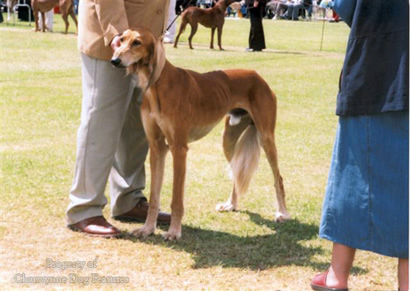
There is no one type of Saluki. Most of the hounds I've seen in Middle Eastern countries have been smooth-haired (the Nejdi type), not feathered (the Shami or Syrian type). The smooth coat is dominant. In the show world we have smooth and feathered hounds registered as Salukis, with the smooth-coated Sloughi (from North Africa) listed as a separate breed. The Arabs there however referred to them as mogrebi or western. The Tuareg Sloughi, sometimes known as the 'oska', is classified separately in some countries as the Azawakh Sloughi, from the valley of that name in Mali and Niger. Both the Azawakh and the Sloughi have been found to possess an additional allele on the glucose-phosphate-isomerase gene locus, not found in other sighthounds but also featuring in the jackal, hinting at a separate origin. Circassia, in the Caucasus, was once famous for its sighthounds; but Circassians have migrated to Syria, Iraq, Jordan and Turkey too. The Shilluk greyhound from the plains of the White Nile in Southern Sudan is more Saluki-like than Greyhound-like. The Poligar and the Vaghari of India too have a distinct smooth Saluki look to them and are all-round hunters not just sighthounds.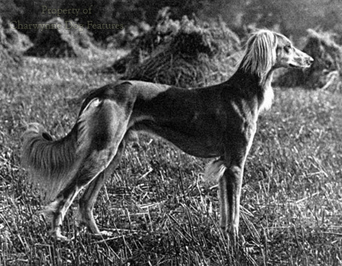
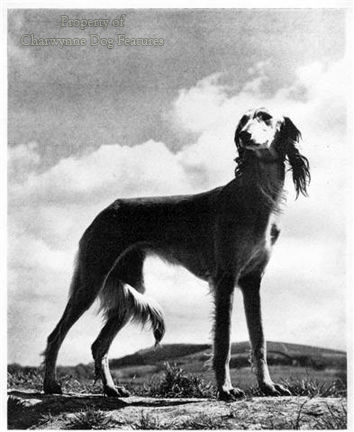
The deserts of the Indian sub-continent have proved good hunting grounds for sighthounds. The Sindh Hound is found in the deserts of Sindh and Rajasthan and famous as a boar-lurcher, being Great Dane size: 28 to 30" and around 100lbs in weight. Lighter and more Sloughi-like is the Rampur Hound, the Greyhound of Northern India, the Maharajah of Baria once having a famous kennel. Around 28" at the shoulder and weighing around 75lbs, they have been used on stag and boar and for hunting jackal. A century ago, some were brought to Britain and exhibited at the Dublin show. The lurcher of Maharashtra is the Mudhol Hound, between the Greyhound and the Whippet in size. More Saluki-like is the lurcher of the Banjara, a nomadic tribe with gypsy conections. The Banjara, or Vanjari, is famed for its stamina and nose and its ability to pull down deer, always going for the hindquarters, not the throat, as many Deerhounds do instinctively.
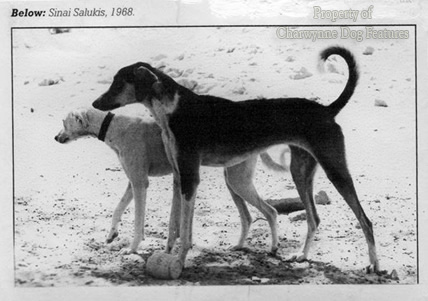 The Chippiparai, the lurcher of the south, is described as being Dobermann-like in outline, but usually white in colour and used mainly for hare-hunting. They are regarded as the most intelligent and biddable Indian breed, being used as police dogs in some areas. The Poligar Hound is the Greyhound of Southern India; they have been called the lurcher of India, used on fox, deer, jackal, and, in packs, on boar. For generations this breed was used for pig-hunting on foot with spears, rather as the ancient Greeks hunted them. Around 26" at the shoulder and weighing between 40 and 45lbs, they are thin-coated but the coat has a stiff wiry texture, harsh to the hand when back-brushed. They are famous long-distance runners but sadly for a delicate constitution, needing careful rearing.
The Chippiparai, the lurcher of the south, is described as being Dobermann-like in outline, but usually white in colour and used mainly for hare-hunting. They are regarded as the most intelligent and biddable Indian breed, being used as police dogs in some areas. The Poligar Hound is the Greyhound of Southern India; they have been called the lurcher of India, used on fox, deer, jackal, and, in packs, on boar. For generations this breed was used for pig-hunting on foot with spears, rather as the ancient Greeks hunted them. Around 26" at the shoulder and weighing between 40 and 45lbs, they are thin-coated but the coat has a stiff wiry texture, harsh to the hand when back-brushed. They are famous long-distance runners but sadly for a delicate constitution, needing careful rearing.
The hunting dogs of the nomadic Indian peoples today fall into two types: the lighter-boned smooth-coated Mudhol or Karvani dogs and the stronger-boned silky-feathered Pashmi or Pisouris, which can range from 20 to 28". They are used on a wide variety of quarry, from chinkara and blackbuck, fox and rabbit to civet and mongoose, even black-faced monkeys, a local pest.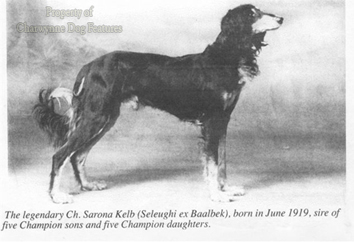
In a different continent and of a totally different type are the tribal dogs of South Africa. This remarkable group of dogs has been researched and then publicised by Johan Gallant in South Africa, after centuries of European indifference. Any group of dogs which can survive without ever receiving any veterinary care, in a testing climate like the South African bush and operating in terrain which would challenge any functional animal, deserves attention. The Africanis is believed to be a direct descendant of the domestic dogs which came to southern Africa with the Iron Age migrations of the Bantu-speaking people. These dogs were then taken up by the resident Khoisan people; these dogs were never bred for type but type developed from function.
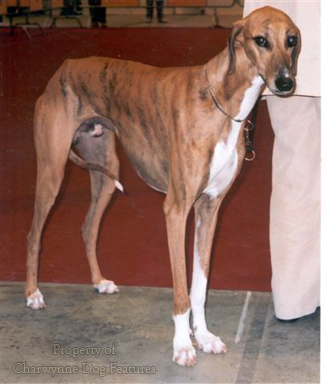 Also from Africa come the ibex-hounds of the Sudan and, more centrally, the Azawakhs, a breed that has lived for thousands of years with the nomadic tribesmen of the Berber and Tuareg. Azawakh means 'land of the north' and spans Niger and Mali. Unusually for a sighthound breed the Azawakh is also used as a herding dog and watchdog. If the Sloughi is the Arabian sighthound, then the Azawakh is the African one. Their temperament is alleged to be more feline than canine, perhaps from their natural aloofness and independence of mind. Looking taller than the other sighthound breeds, they have thin skins, a prominent sternum and very deep chest and a very high tuck-up, making some look almost skeletal. Often confused with the Sloughi, especially the desert type in this breed, the mountain type of Sloughi being taller and more robust.
Also from Africa come the ibex-hounds of the Sudan and, more centrally, the Azawakhs, a breed that has lived for thousands of years with the nomadic tribesmen of the Berber and Tuareg. Azawakh means 'land of the north' and spans Niger and Mali. Unusually for a sighthound breed the Azawakh is also used as a herding dog and watchdog. If the Sloughi is the Arabian sighthound, then the Azawakh is the African one. Their temperament is alleged to be more feline than canine, perhaps from their natural aloofness and independence of mind. Looking taller than the other sighthound breeds, they have thin skins, a prominent sternum and very deep chest and a very high tuck-up, making some look almost skeletal. Often confused with the Sloughi, especially the desert type in this breed, the mountain type of Sloughi being taller and more robust.
The desert sighthounds of the world are true lurchers; most are unrecognised and unregistered, but they have been carefully bred to function. They should never be underestimated as highly effective hunting dogs, surviving hard times in tough places.
Find a desert and a sighthound will not be far away. For a hound which hunts by speed and capitalises on superb eyesight, the desert is the hunting ground to excel in. The Saluki, The Sloughi, the Awazakh and the Africanis much further south all exploit their remarkable sprinting ability and capability to detect animal movement at long range. They are pot-fillers where other predators do not succeed; they are canine hunters where other sporting dogs cannot hunt. Only the cheetah rivals their success, with perhaps the Abyssinian wolf a contender. The Saluki is easily the best known desert sighthound, with the feathered variety well-established in Europe. Commendably, some of the Saluki owners in Britain have coursed their hounds and now use them for lure-chasing. Some real devotees go to Spain for old-time coursing. These superb hunting dogs were bred to exacting standards by expert huntsmen over many centuries; the very least we can do in these constricted times is to let them stretch their legs, really fly; let their instinctive behaviour manifest itself; give them spiritual contentment.
